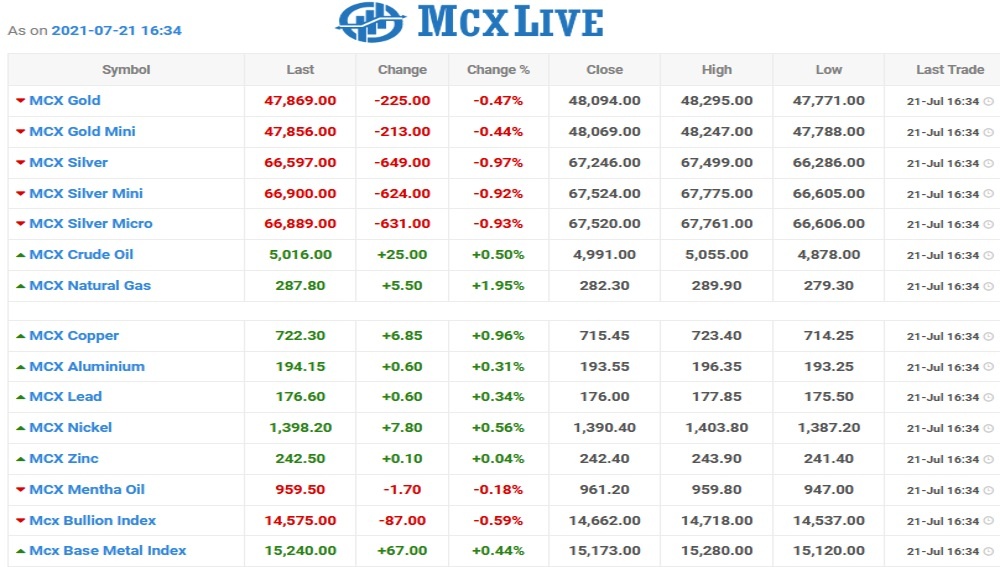
Crude oil prices were steady after a sharp selloff on July 19 over concerns of lower demand due to rising cases of coronavirus Delta variant and OPEC+ agreement to boost supply in coming months. The prices were pressured by a stronger dollar, selloff in equity markets and increased US-China tensions.
Crude prices have tumbled Rs 717 or 12.59 percent from the high of Rs 5,695/barrel it reached on July 5.
The energy commodity turned negative after a flat to gap-down start tracking the subdued global cues.
On the MCX, crude oil delivery for August slipped Rs 12, or 0.24 percent, to Rs 4,979 per barrel at 16:18 hours IST with a business turnover of 7,225 lots. The delivery for September eased by Rs 5, or 0.10 percent to Rs 4,969 per barrel with a business volume of 136 lots.
The value of August and September’s contracts traded so far is Rs 1,261.82 crore and Rs 13.29 crore, respectively.
West Texas Intermediate (WTI) crude slightly down 0.11 percent to $66.28 per barrel, while Brent crude, the London-based international benchmark, fell 0.17 percent to $68.50 per barrel.
“NYMEX crude trades modestly higher today near $66.45/bbl. Crude inched up amid some stability across financial markets. However, weighing on price are rising virus cases, firmer US dollar, increased US-China tensions, OPEC+ decision to raise output starting next month and prospect of higher US supply. Crude oil plunged sharply amid the culmination of several negative factors. The sell-off has dented market sentiment; however, we may see some stability as focus shifts to inventory report,” said Ravindra Rao, CMT, EPAT-Quantinsti, Head – Commodity Research at Kotak Securities Ltd.
The OPEC+ coalition has been gradually rolling back its historic production cuts, from 9.7 million b/d in the worst of the pandemic last spring and summer, to the current 5.8 million b/d. If the 400,000 b/d monthly output increases go forward, the remaining collective OPEC+ cuts will be erased by September 2022. But ministers said they will monitor market conditions and adjust supply as needed to prevent balances from getting too far off kilter, whether due to overproduction or resurgent COVID-19 cases. The pending resumption of US-Iran nuclear deal negotiations will also bear watching, if sanctions are eventually relieved on Iranian oil sales, said S&P Global Platts.
According to an analysis prepared by the OPEC secretariat and seen by S&P Global Platts, holding to the agreed production increases will flip the market from deficit to surplus by the first quarter of 2022. The analysis assumes global demand growth of 6 million b/d in 2021 and 3.3 million b/d in 2022, and sees OECD oil inventories ending this year at 122 million barrels below the 2015-2019 average that the group is targeting before rising to 10 million barrels above by the end of 2022.
